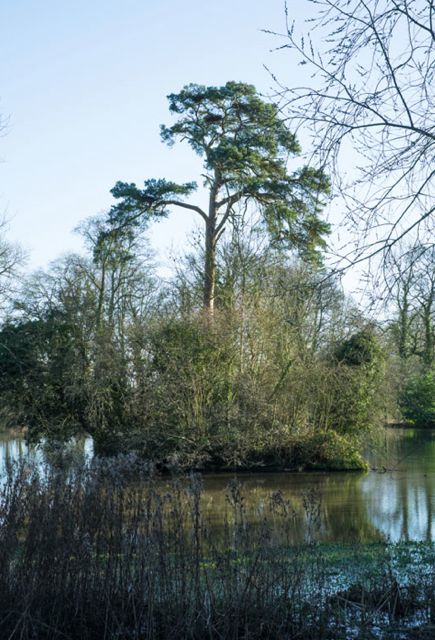
The island viewed from from the west (CM).
So
the ice melted, the snow thawed and the snowdrops re-emerged ready to
put on a show and
we turned our attention once more to the island. It was time to test
out the ferry after its enforced lay-off during the big chill.
Surprisingly all the dingy needed was a little extra air and a good
shake and we reattached it to the loop and away we went...
So for those of you planning a voyage to the House of Diversion this is how it's done!
(If nothing happens try right clicking and selecting "view video")
On Tuesday February 5th. I began some basic clearing along the remains of the lake side revetment starting with the patch on the south side pictured
above. As I worked my way along towards the south-east corner of the
lake I spied an oddly rounded surface just poking above the water...
did I say water? Well take a look at the photograph below. It turned
out to be a large stone ball and after a lot of prying around in
freezing cold mud and a degree of heaving and humping I got it onto dry
land and trundled it round to the car park. It was not especially
deeply set and my feeling is that it was thrown or rolled in, possibly
from the eroding bank, comparatively recently.
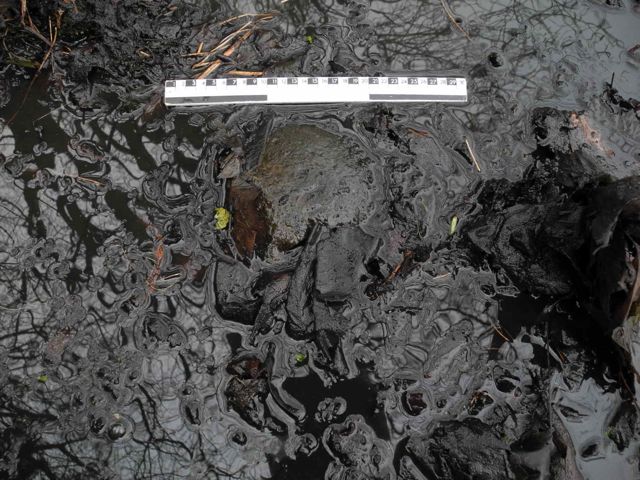
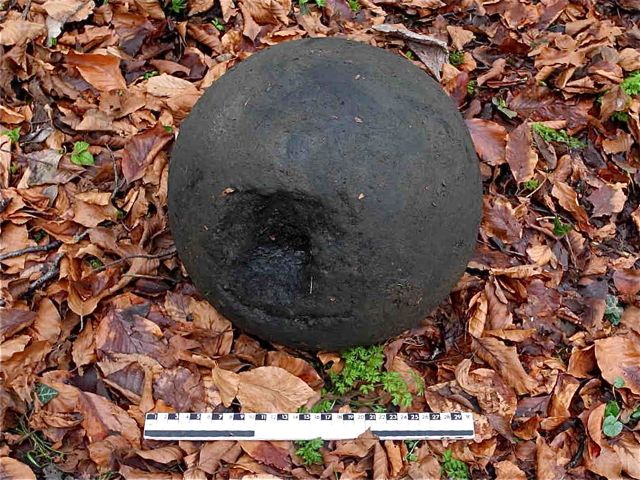
Creature from the Black Lagoon anyone? Here it is on dry land.
As a change from wrestling with tape measures I
occasionally took walks to begin to understand the wider boundaries of
the park. their are considerable traces of well made ashlar faced stone
walls out in the fields to the south and at the edge of the village to
the north. The full circuit has yet to be traced but I'm beginning to
plot the occurrence of walling on the map. Another boundary feature
identified is the curious ditch and double bank which seems to delimit
the central ponded area to the north and south.
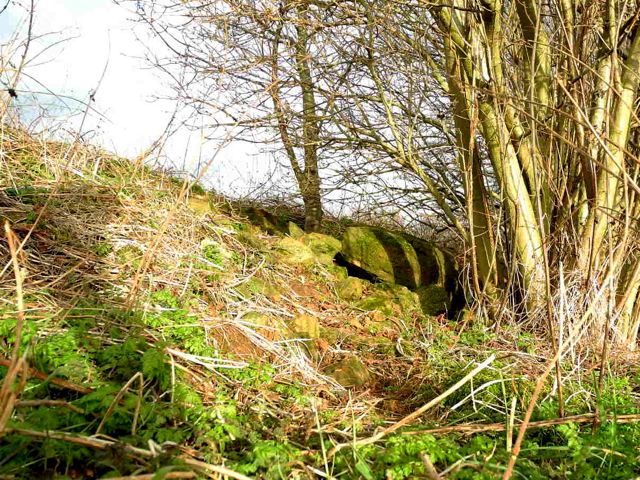
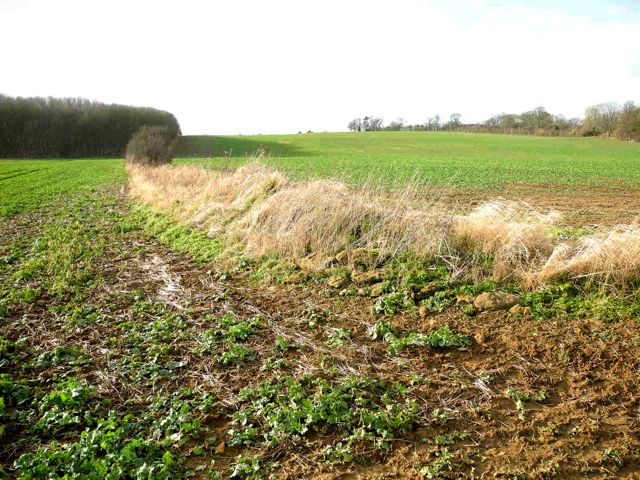
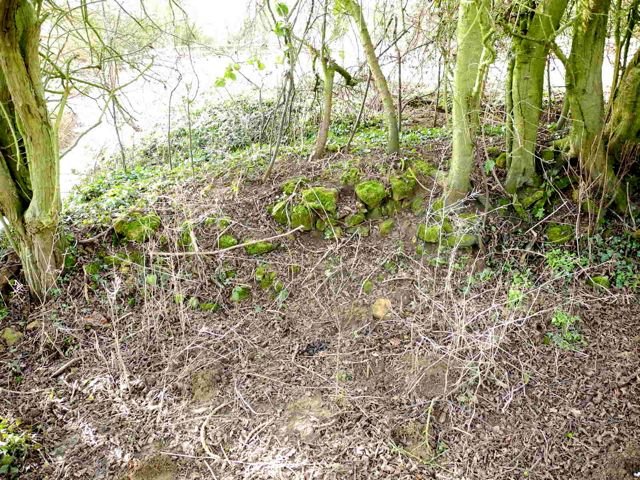
1. The estate wall south of the church, there may have been a large building such as a barn here. 2. The south-east corner of the estate wall. 3. Remains of the wall on the north side of the stream.
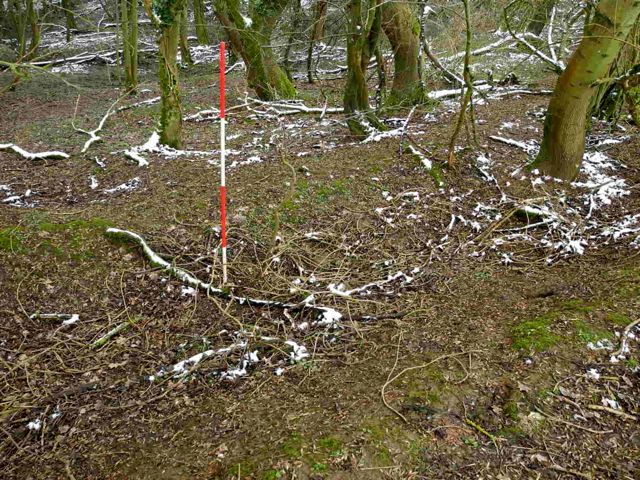
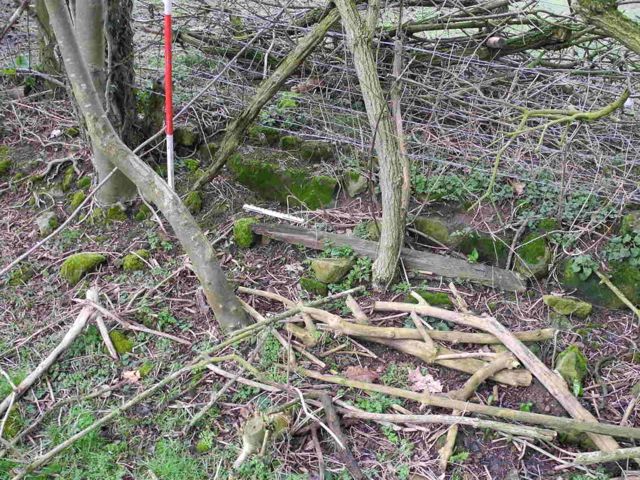
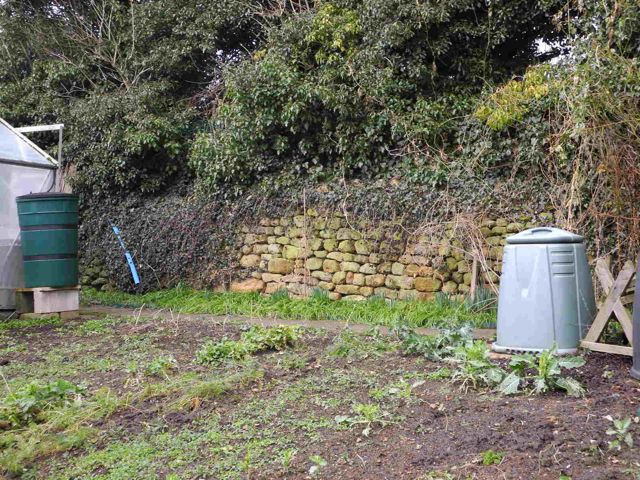
4. Here is a portion of the double bank and ditch on the north side of Pond Four. 5. These ashlar blocks survive from the wall just north of the Lake. 6. This well preserved stretch lies behind an allotment.
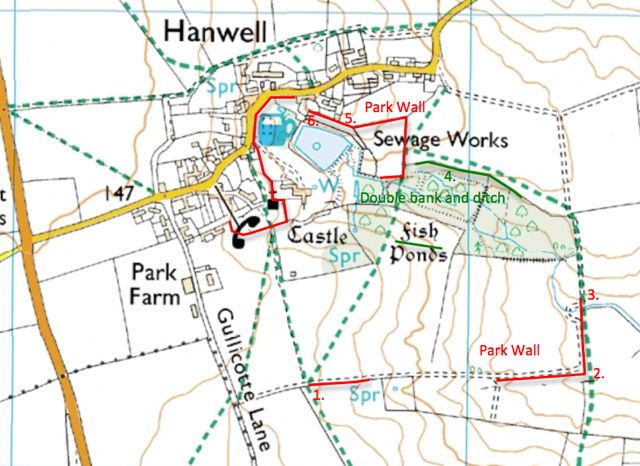
Initial plot of estate boundaries.
A team of endlessly keen and inventive volunteers from Raleigh International arrived on Saturday 16th. and split into two task forces. One group tackled the overgrown upper reaches of the Spring Dell and by clearing vegetation opened up some brilliant views of the cascades there, the other group were given the challenge of building a jetty to facilitate access to the island. Christopher produced the plan and materials and team executed it with a certain amount of panache. the gardens were also toured by a party from the Oxford Botanical Society who were treated to, amongst other things, a quick resume of the archaeology. On Sunday we were open again to the general public and some gorgeous weather more than made up for the previous week's wash-out. it was also good to welcome a couple of new volunteers to Hanwell who set too with a will helping clear vegetation from around some of our standing stonework.
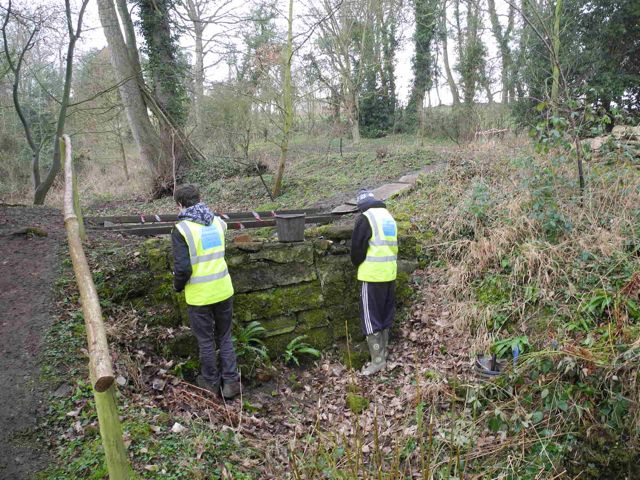
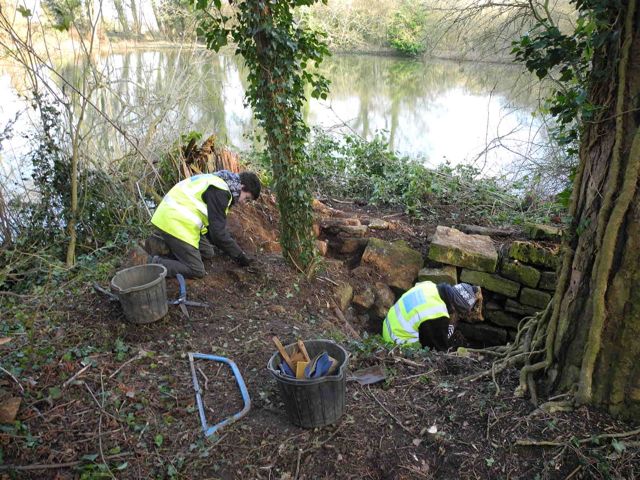
Weeding underway on the stone sluice by the north-east corner of the Lake and on the island.
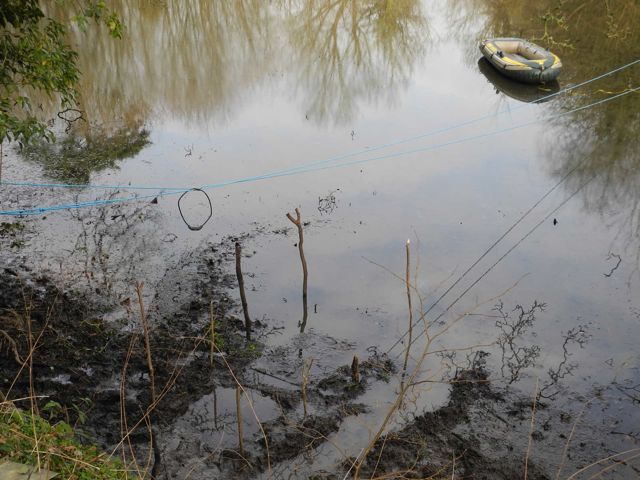
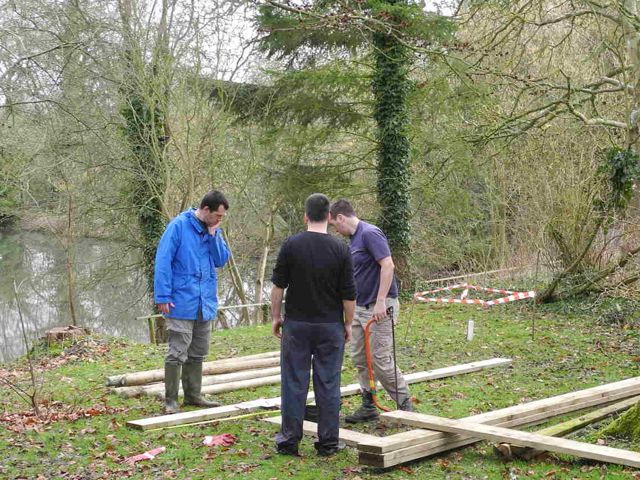
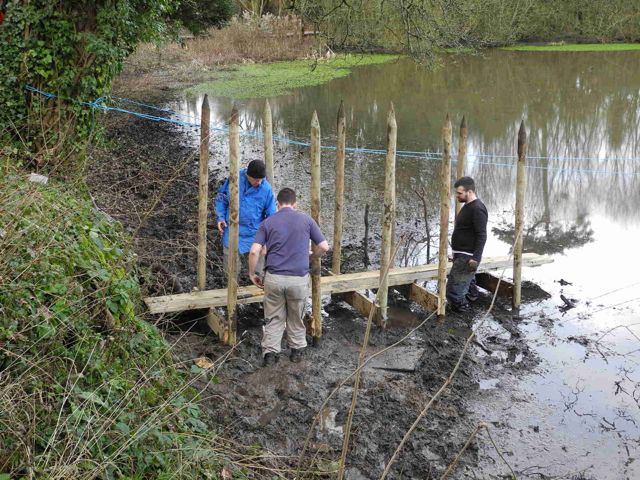
The position of the jetty was marked out... the timber was laid out the plans consulted, the cutting begins... the supports manufactured on dry land have been lowered into place and the decking added.
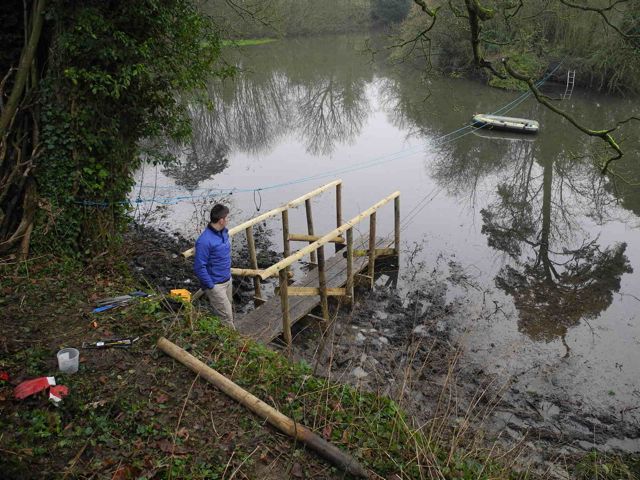
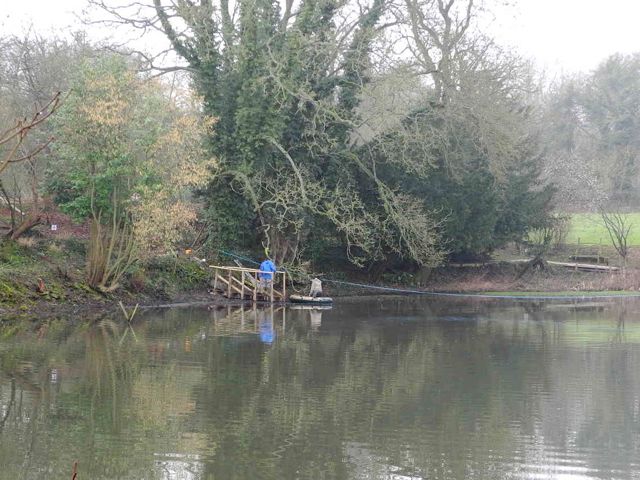
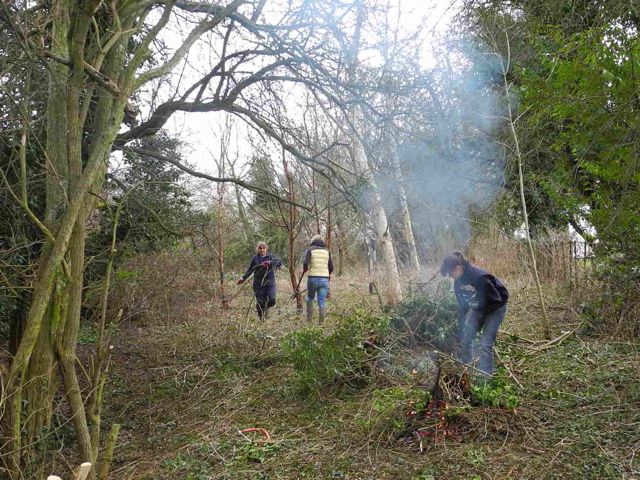
The following day the posts were cut to length and a handrail added and a bonus boat trip enjoyed. Meanwhile equally wonderful work was being done down in the Dell, I just didn't get round there so much.
So for those of you planning a voyage to the House of Diversion this is how it's done!
(If nothing happens try right clicking and selecting "view video")
The
object of this particular excursion was to enable the expedition
photographer Chris Mitchell to capture the environment 'au naturel', as
you can see below just about everything is draped in ivy and overgrown
with moss. As work proceeds more and more of this will be stripped away
and we thought it important to have a record before that process of
clearing and cleaning started. You can see the effect here with Chris's
photo of Sir Anthony's Bath and how it looked later in the day after
work had started on the weeding.
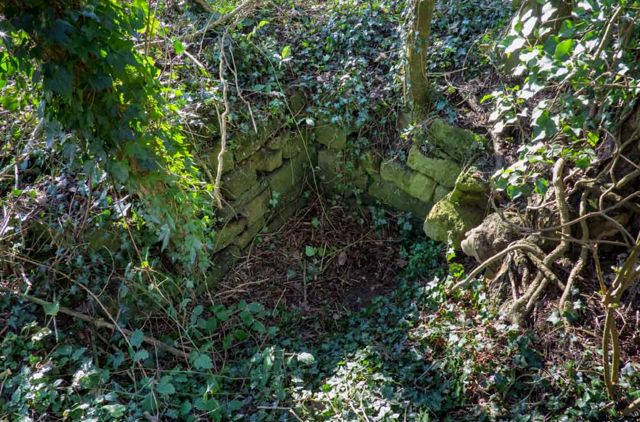
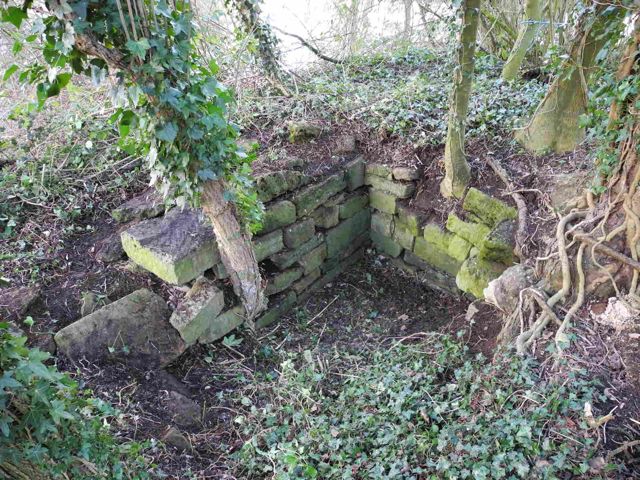
Before (CM) and after (SW)


Before (CM) and after (SW)
We
recorded all of the exposed stonework as well as the rarely seen view
outward from the island and the presence of the slightly spooky
'Hanwell Hag'!
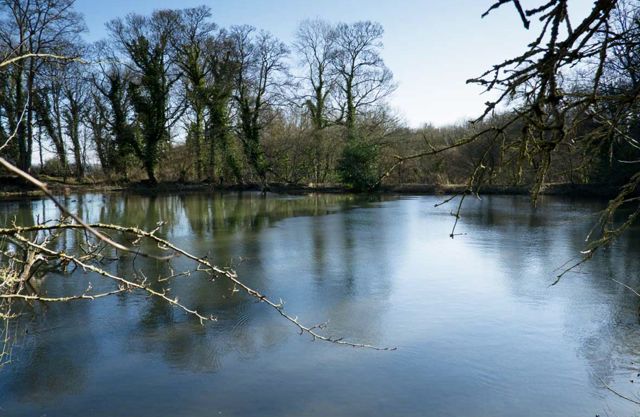
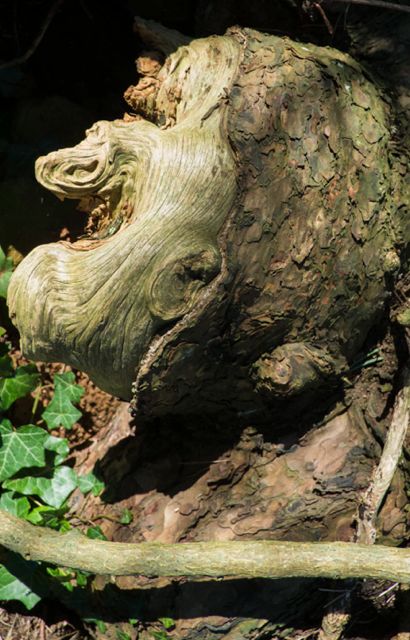
View from the island looking east towards the great dam. (CM) A worryingly anthropomorphic hunk of Scots Pine! (CM)


View from the island looking east towards the great dam. (CM) A worryingly anthropomorphic hunk of Scots Pine! (CM)
Back
on dry land Chris worked his way round the rest of the ruins and also
discovered the extraordinary ability his camera had to take panoramic
views. Select the right setting, press the shutter button, start to
move and off goes the camera sounding a little like a sewing machine,
when you stop moving it stops snapping then automatically runs the
software to create one extended image - amazing.
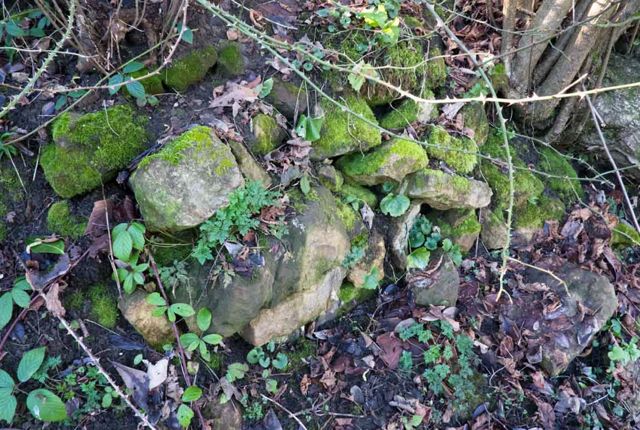
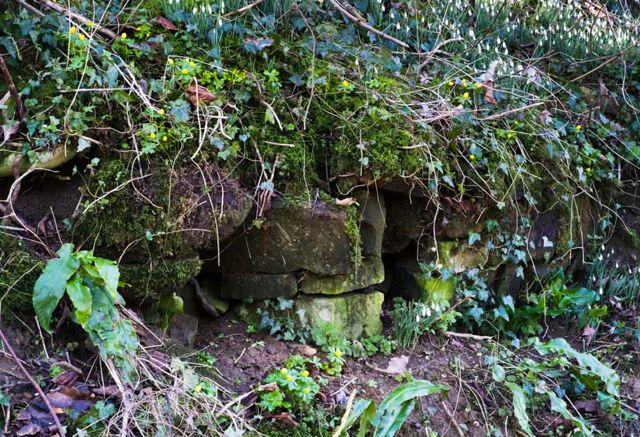
Part of the small remaining section of the original revetment to the Lake, from north. (CM) The polygonal feature known as Flora's Temple from the south-east. (CM)
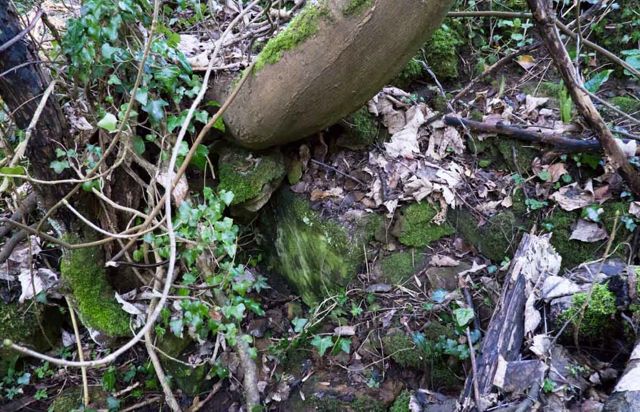
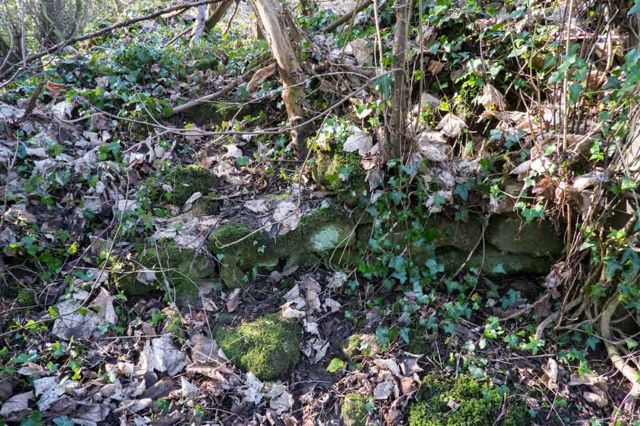
The ruined sluice, north-east corner of the Second Fishpond from the south-east. (CM) Possible boundary wall to walled garden from east. (CM)
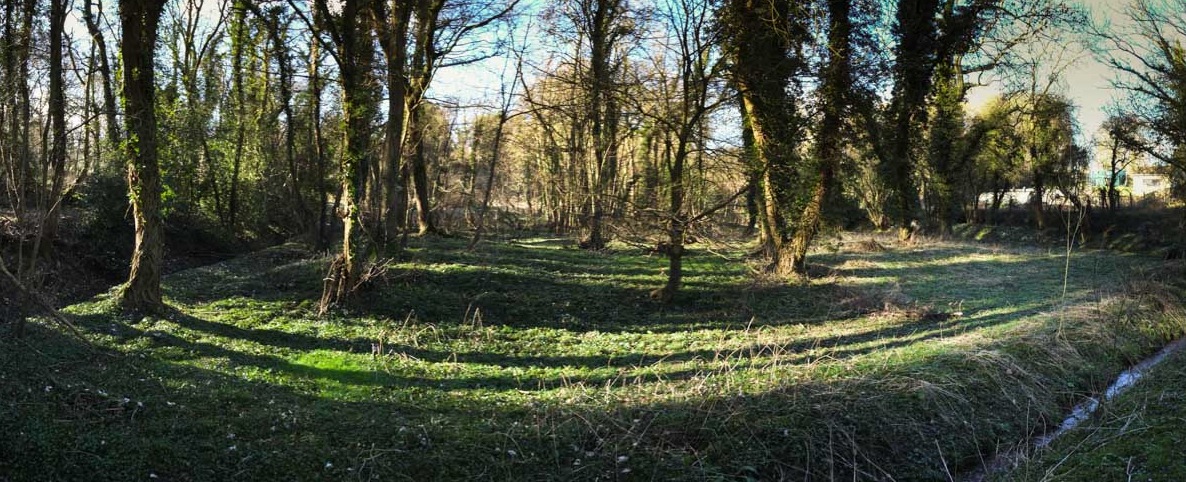
The panoramic view of the Second Fishpond looking west.(CM)


Part of the small remaining section of the original revetment to the Lake, from north. (CM) The polygonal feature known as Flora's Temple from the south-east. (CM)


The ruined sluice, north-east corner of the Second Fishpond from the south-east. (CM) Possible boundary wall to walled garden from east. (CM)

The panoramic view of the Second Fishpond looking west.(CM)


Creature from the Black Lagoon anyone? Here it is on dry land.
It
is clear that what we have here is a ball finial from a feature such as
a gate pier or a balustrade. The shaping of the base suggests it sat on
a square platform and was held in place by an iron pins as with the
example below from the one of the gate piers. Could this have been from
a stone balustrade which I believe would once have surrounded the lake?
Well we have some way to go before we can conclude that. It may have
come from a feature set up by the Berkeleys in the last century similar
to the gate piers by the road. It is clearly quite different to the
massive ball finials on the main seventeenth-century gate to the castle
which are turned and possibly hollow, Christopher pointed out the join
to me where the two halves are put together and noted that bees appear
to nest inside. However, I still feel that the most likely explanation
is that it did form part of the seventeenth-century landscaping, we'll
only know if we find a few more in position round the lake in better
archaeological contexts.
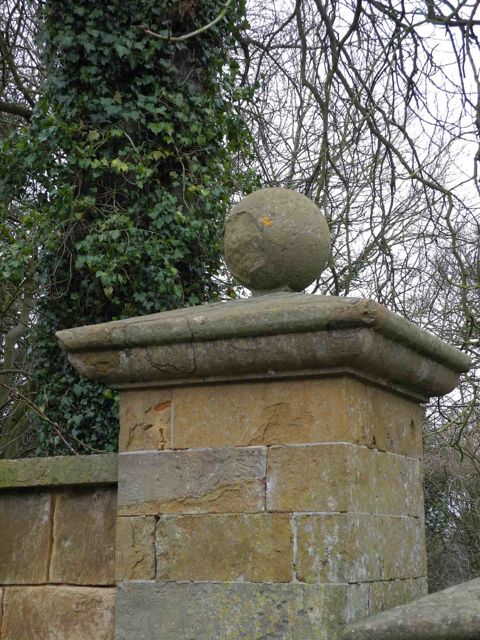
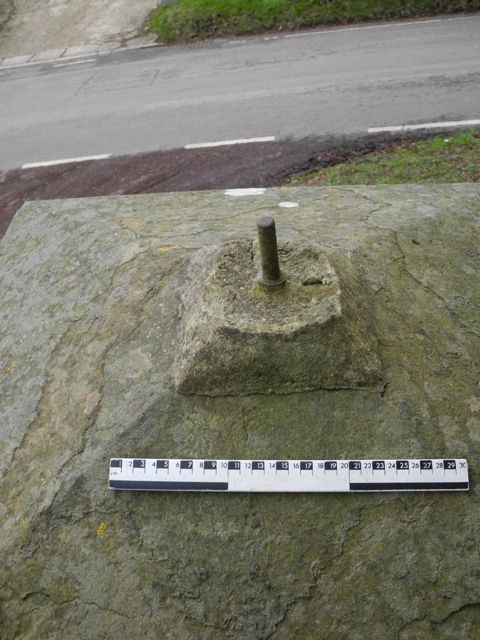
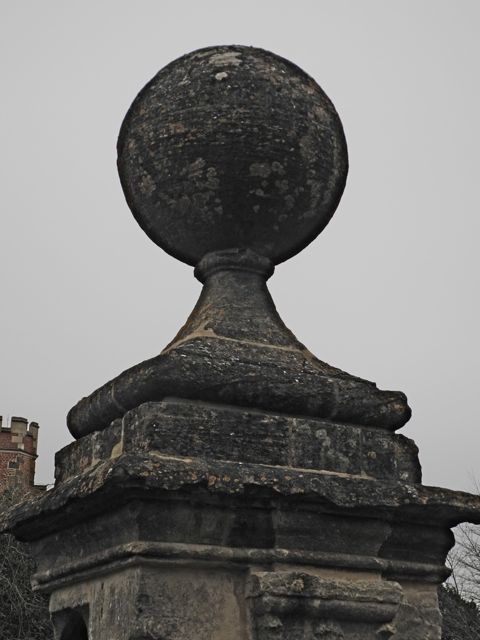
Gate pier, cap stone and ball finial, early 20th. century, from west. Fixing arrangement from adjacent damaged pier . Castle gate pier, seventeenth century,from north-west.
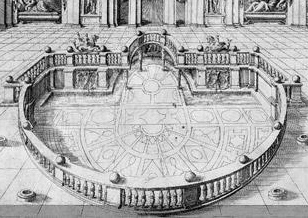
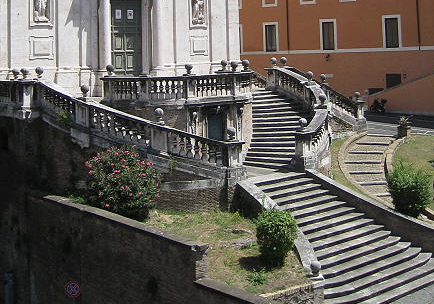
Here are some Italian instances for ball spotting: the Villa Guilio and the Church of Santi Domenico e Sisto, both in Rome...
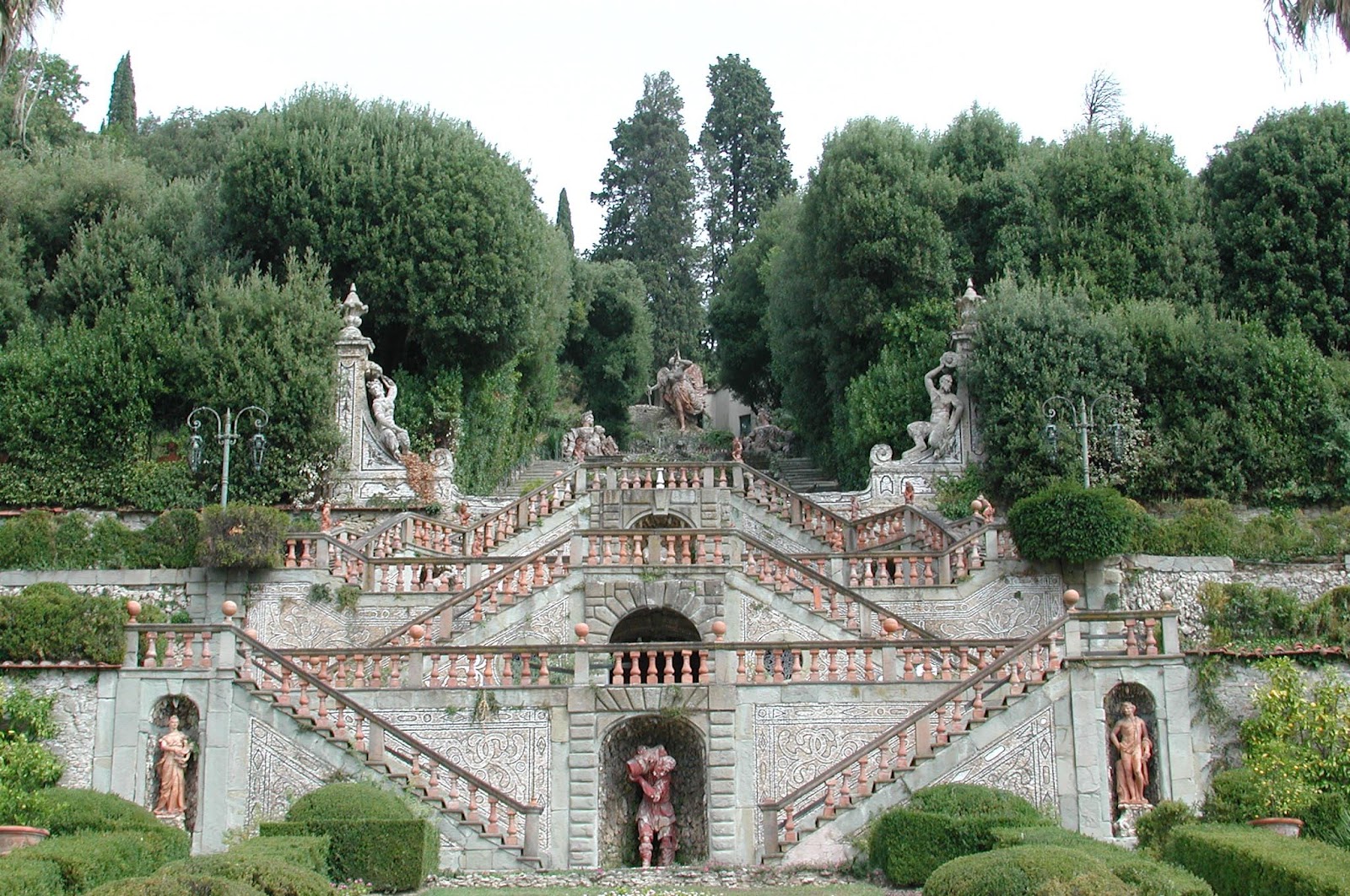
and the famed terraces of the Villa Grazoni laid out in 1652. Could the East Terrace at Hanwell have looked a bit like this?
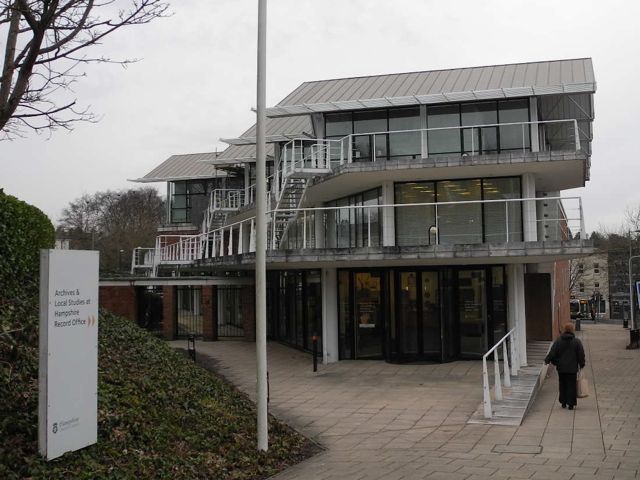
The Hampshire County Record Office, Sussex Street, Winchester



Gate pier, cap stone and ball finial, early 20th. century, from west. Fixing arrangement from adjacent damaged pier . Castle gate pier, seventeenth century,from north-west.


Here are some Italian instances for ball spotting: the Villa Guilio and the Church of Santi Domenico e Sisto, both in Rome...

and the famed terraces of the Villa Grazoni laid out in 1652. Could the East Terrace at Hanwell have looked a bit like this?

The Hampshire County Record Office, Sussex Street, Winchester
On
Thursday 7th. we made the first of what I am sure will be many visits
to the Hampshire County Record Office to consult the remaining portions
of the Cope family archive. We looked at a complaint, addressed to
Robert, Earl of Salisbury, Chancellor of England by John Chambre of
Northampton against Ralph Grevill for forcible entry and dispossession
of the manor of Hanwell on 7 January 1455. We were hoping that there
might have been some details of the manor included in this rather
sordid tale of rustling violence and intimidation (43M48/93), but no.
Then just to say that we had seen it we examined the release of rights
in the manor of Hanwell by Humfrey de la Pole, brother of Edmund de la
Pole, Earl of Suffolk to William Cope, esq, Cofferer to Henry VII
(3M48/94). My medieval Latin is less than fluent so it didn't make much
sense but this is where the Copes at Hanwell story starts. However, my
main interest was in the two volume catalogue of the Cope family
library from Bramshill (43M48/2017-2018). Inside the first of two
volumes is written, 'This catalogue was compiled by Ada Beatrice Cope
from the slips made
by her grandfather, Sir William Cope, Hoping that some enterprising
Cope of the future will have it printed Jul 1898'. Well it was not to
be and the bulk of the library was sold at auction in the 1930s
however, our thinking was that there was a reasonable chance that the
library would have contained volumes formerly in the library at Hanwell
and sure enough records had been made of several volumes which carried
the autographs of either the first or fourth baronets. I think it is
reasonably safe to assume that most of those titles published before
Sir Anthony's death in 1675 may have formed part of this earlier
library and that a study of the titles therein may give us some
insights into the 'Virtuoso's interests and some of the influences on
him. We only had time to examine the first 60 pages or so of 400 so
still lots to do but the indications are promising with a number of
early astronomical texts appearing such as 'Alfrangus (Muhammed fil:Ketiri) Elementa Astronomae - Arabice et Latine a Jacob Golio Amsterdam 1669'
Friday 8th. saw more weeding out at the House of Diversion. We are starting to take out some of the small trees that have self seeded on the island with a big elder being the first to go. You can see from the photograph below how the stones have been displaced by the tree roots. Removal of much of the ivy covering the ground is starting the show the outline of the entire chamber.
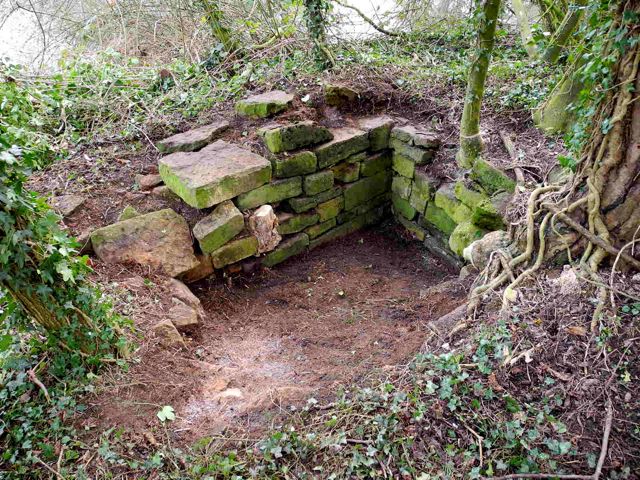
Sir Anthony's Bath emerging, view from the north-west.
The following week started out cold with snow on the ground. Nevertheless the work on surveying in detail the immediate surroundings of the lake went on regardless crunching and squelching round the terraces and scrambling up and down the great dam, Fortunately by the end of the week the weather had turned and the weekend was set fair for the visit of Raleigh International and a further day of Stars and Snowdrops.
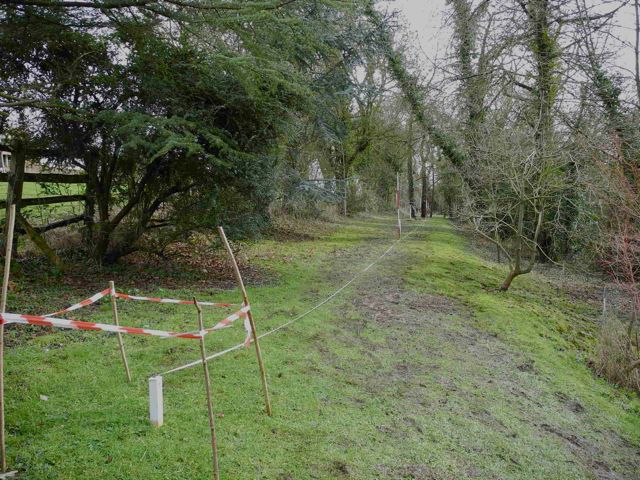
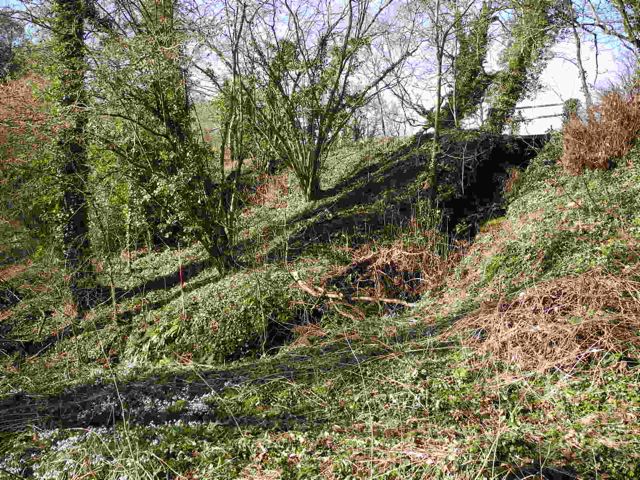
A new hundred metre tape just about made it all the way along the north side of the lake. We had to use ranging rods as markers to ensure our measurements on the dam were truly horizontal.
Friday 8th. saw more weeding out at the House of Diversion. We are starting to take out some of the small trees that have self seeded on the island with a big elder being the first to go. You can see from the photograph below how the stones have been displaced by the tree roots. Removal of much of the ivy covering the ground is starting the show the outline of the entire chamber.

Sir Anthony's Bath emerging, view from the north-west.
And then the Stars and Snowdrop weekend was upon us. On
Saturday 9th. and Sunday 10th. the grounds and observatory were thrown
open as a fund-raiser and the public invited in to tour the gardens,
peer at the telescopes and enjoy tea and cake in the Coach House. Sadly
the weather was not particularly kind and on Sunday it rained and
rained and rained. However, it did see one historic event. I took a
recording of the music of Thomas Baltzar
and played it in the coach house, so the notes of his extraordinary
violin music echoed round the walls of Hanwell for the first time in
nearly 350 years!
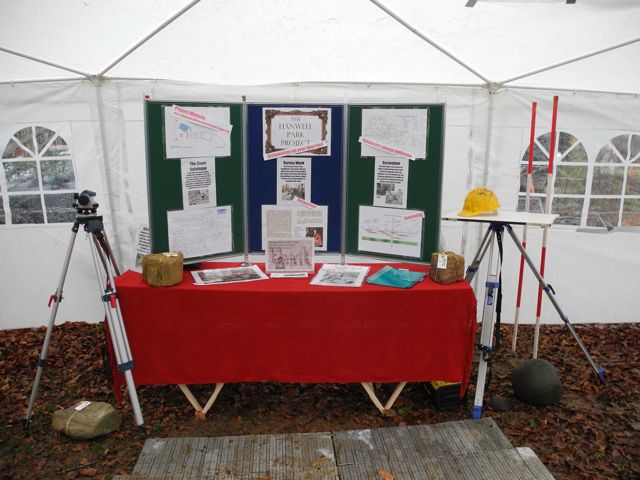
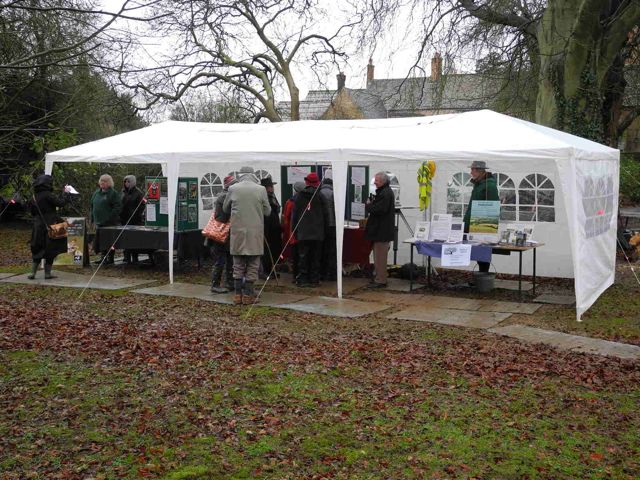
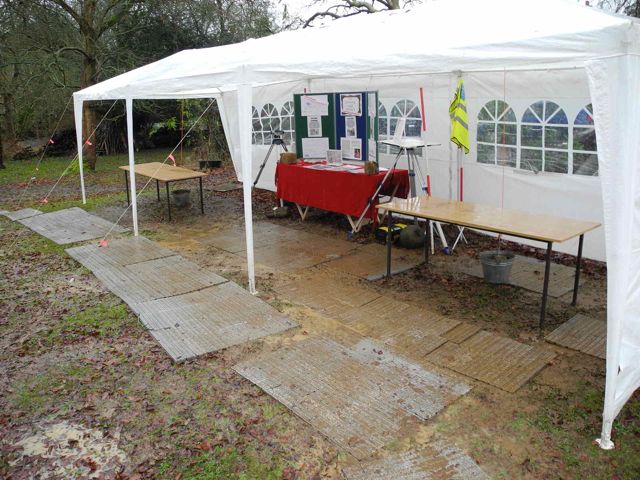



Here
is our display at the start of the day on Saturday... the crowds
gather... then disappear as the rain pours down Sunday afternoon.
The following week started out cold with snow on the ground. Nevertheless the work on surveying in detail the immediate surroundings of the lake went on regardless crunching and squelching round the terraces and scrambling up and down the great dam, Fortunately by the end of the week the weather had turned and the weekend was set fair for the visit of Raleigh International and a further day of Stars and Snowdrops.


A new hundred metre tape just about made it all the way along the north side of the lake. We had to use ranging rods as markers to ensure our measurements on the dam were truly horizontal.



1. The estate wall south of the church, there may have been a large building such as a barn here. 2. The south-east corner of the estate wall. 3. Remains of the wall on the north side of the stream.



4. Here is a portion of the double bank and ditch on the north side of Pond Four. 5. These ashlar blocks survive from the wall just north of the Lake. 6. This well preserved stretch lies behind an allotment.

Initial plot of estate boundaries.
A team of endlessly keen and inventive volunteers from Raleigh International arrived on Saturday 16th. and split into two task forces. One group tackled the overgrown upper reaches of the Spring Dell and by clearing vegetation opened up some brilliant views of the cascades there, the other group were given the challenge of building a jetty to facilitate access to the island. Christopher produced the plan and materials and team executed it with a certain amount of panache. the gardens were also toured by a party from the Oxford Botanical Society who were treated to, amongst other things, a quick resume of the archaeology. On Sunday we were open again to the general public and some gorgeous weather more than made up for the previous week's wash-out. it was also good to welcome a couple of new volunteers to Hanwell who set too with a will helping clear vegetation from around some of our standing stonework.


Weeding underway on the stone sluice by the north-east corner of the Lake and on the island.



The position of the jetty was marked out... the timber was laid out the plans consulted, the cutting begins... the supports manufactured on dry land have been lowered into place and the decking added.



The following day the posts were cut to length and a handrail added and a bonus boat trip enjoyed. Meanwhile equally wonderful work was being done down in the Dell, I just didn't get round there so much.
In
the aftermath of the third Stars and Snowdrops day we were visited by
Jo Thoenes from Radio Oxford who interviewed Rowena and Christopher and
myself about all aspects of the open days including the archaeology. In
the meantime the herons have returned to nest in the Scots Pine on the
island. We may have to rethink our plans for the House of Diversion if
we are to avoid upsetting the nesting birds.
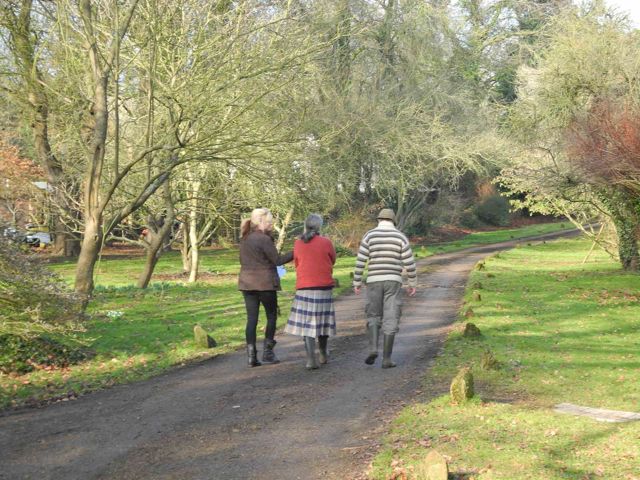
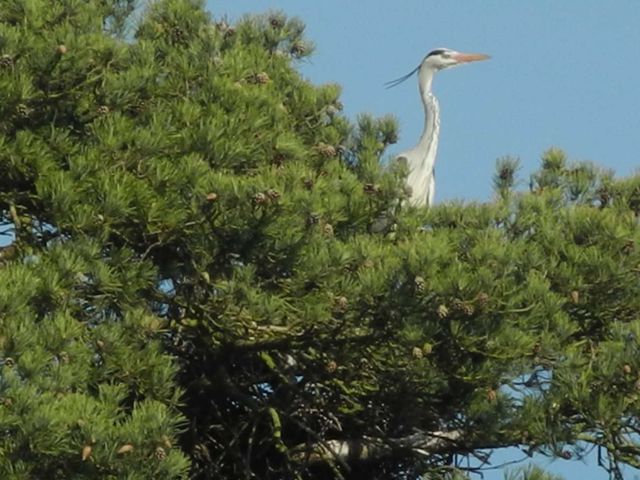
Walking and talking to get an authentic sound of crunching gravel for the interview. One of our herons on watch from the top of the Scots Pine.


Walking and talking to get an authentic sound of crunching gravel for the interview. One of our herons on watch from the top of the Scots Pine.
Find of the Month |
One of our youngest visitors to Stars and Snowdrops picked this item up on his way round and like the fine young budding archaeologist he is he handed it in for further research and analysis. Some kind of edged garden implement, now it has been cleaned up it is clear that it was manufactured by A. and F. Parkes of Dartmouth Street, Birmingham. The business was founded in 1837 and incorporated in 1887 and seems to have still been going in 1961. It bears their famous 'BIPED' trade mark with a logo showing, somewhat strangely perhaps, a pair of feet. What is less clear is what the tool was for. The obvious point of identification would be to describe it as a Dutch or push hoe but what makes it very unusual is the fact that it has a shank that would have been driven in to the end of a wooden handle or shaft which would have been secured with a ferrule to stop the timber splitting. Virtually all other hoes are socketed onto their handles, the only exception seems to have been smaller tools for single handed operation where the forces would be lessened. Does this indicate and early date for the piece? Perhaps nineteenth rather than twentieth century? I'm not an expert of vintage garden tools so if anyone comes up with more information we will be glad to receive it. |
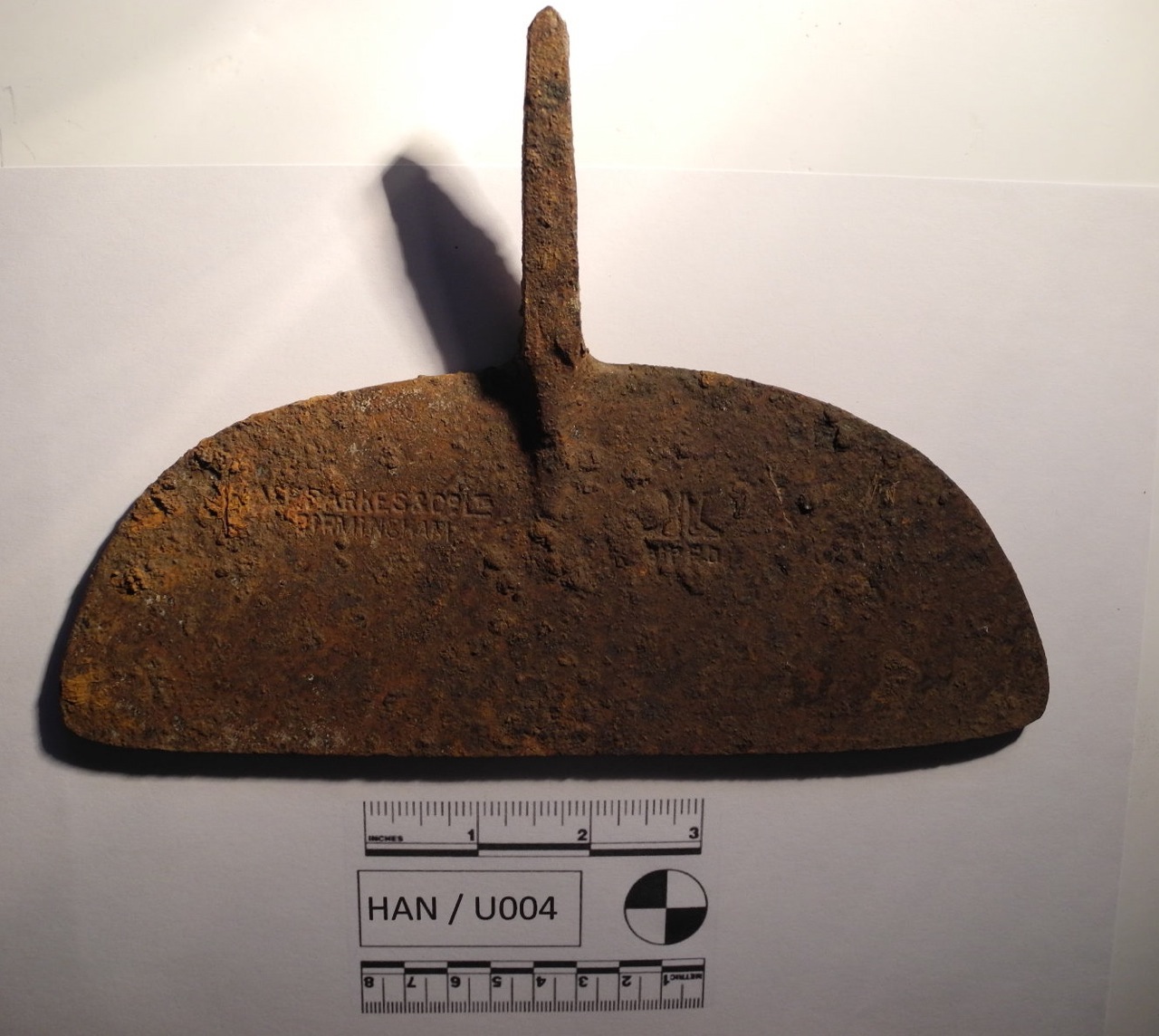 |
 Here is a clearer version of the mark on an old bill hook which amazingly still has the original paper label on the handle. |